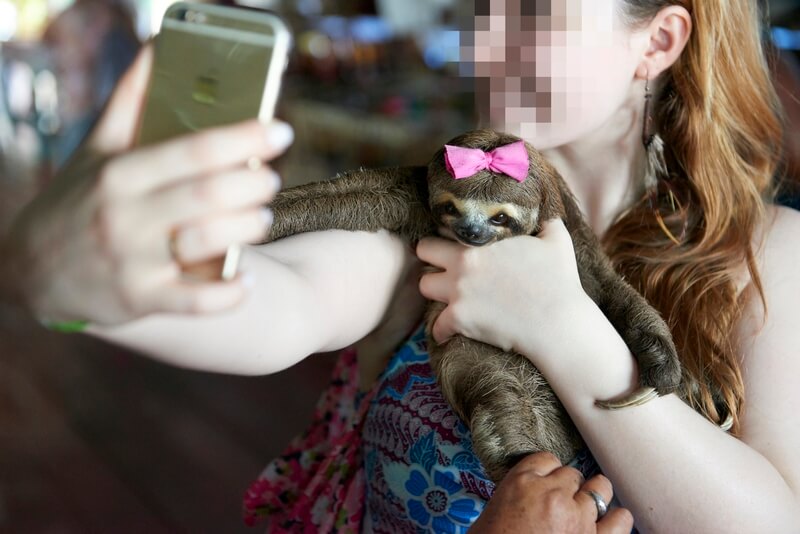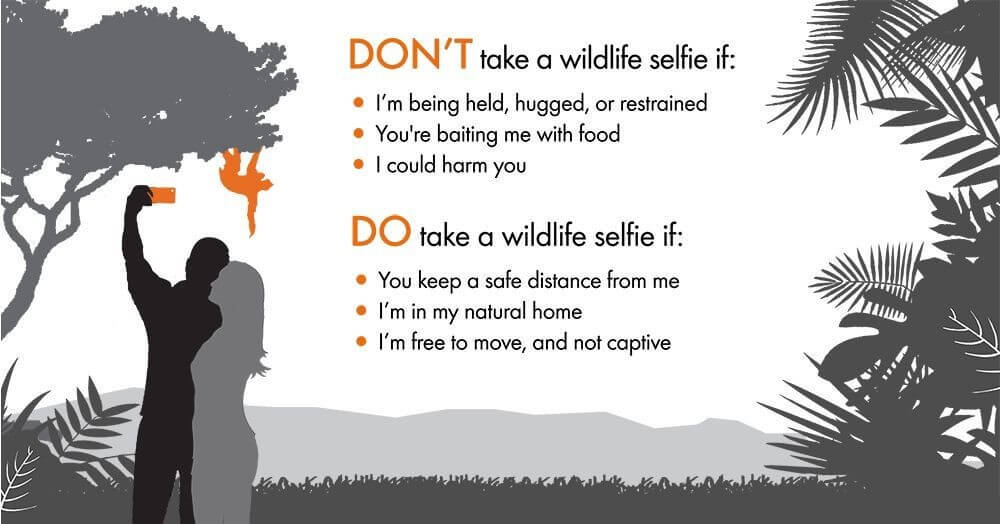
The Wildlife Selfie Code
Amazonian animals are being torn from the wild so tourists can take selfies for Instagram and other social media.
Iconic Amazonian animals are suffering
The Amazon rainforest is famous for its diverse wildlife and the number of tourists who want to take selfies with its fascinating animals is rising fast.
Sadly, this has led to the exploitation of sloths, caimans, pink river dolphins, anacondas, and many more animals, who belong in the wild. With their gentle, slow nature, and facial markings that give the impression they’re always smiling, sloths have become one of the main targets for people looking to use them for profit. Despite the increased popularity of sloth selfies across social media, few people consider the conditions these wild animals are in, or the disruption they can cause to their natural habitat when taking the photo.
Many people offering wildlife selfies in the Amazon search treetops for sloths to steal. These typically calm, gentle animals are snatched from their natural habitats, forced to live in noisy, chaotic environments, and repeatedly passed around from tourist to tourist.
This has built an industry of animal tourism which is extremely dangerous and distressing for these wild animals.
Don’t be part of this ugly picture. Make sure your wildlife selfies are cruelty-free.
Sign our Wildlife Selfie Code now, and help filter cruelty out of selfies.

Most tourists who take photos with wildlife love animals. During once-in-a-lifetime trips to destinations like the Amazon, it’s understandable they’d want to take a snap with a sloth for Facebook, or post a picture with a pink river dolphin on Instagram.
But if they knew about the suffering these animals endure for this type of photo opportunity, they’d put their phones and cameras away.
Amongst the 34 billion images posted by 800 million people on Instagram, our initial investigation shows there are tens of thousands of selfies on Instagram taken with wild animals. These photos capture a moment of shareable joy for people, but for many of them, the animals’ stress and suffering is left out of the frame.
Many people envy friends who post selfies of themselves hugging or holding wild animals, which sadly encourages more people are to take their own photos. This continues the ongoing suffering and cruelty for wildlife.
Together we’ve moved Instagram to help end cruel wildlife selfies
Our Wildlife Selfie Code campaign has successfully influenced one of the biggest social media sites to educate its users about how posting and sharing pictures with wild animals may be supporting animal cruelty behind the scenes.
On December 4, 2017, after 250,000 animal-lovers signed our Wildlife Selfie Code, Instagram launched a new ‘wildlife warning’ page. When Instagram users search for hashtags like #koalaselfie, #elephantride and #slothselfie, a message pops up, informing them about the animal suffering behind the photos.
This incredible acknowledgement of wild animals’ suffering from Instagram happened because of our supporters. It’s proof we should never underestimate the power of our voices.